If you’ve ever wondered whether animals can help filter your pond water, you’re not alone — I get asked about it all the time!
Shrimp, mussels, Daphnia, different types of fish — it sounds like a cool idea, right? Animals that filter the water for you.
Today, let’s break it down:
What really works, what doesn’t, and why nature can be your best pond maintenance partner (if you work with it).
Quick Intro
G’day, I’m Kev!
This is my website and my goal is simple:
To help you build and maintain a healthy pond — without spending a fortune.
If that sounds good, feel free to join my email list and subscribe to my YouTube channel for more pond tips.
Now, let’s dive in. If you prefer video content you might like to watch the video instead:
Can Animals Really Help Filter a Pond?
Shrimp and Freshwater Mussels
Shrimp and mussels are natural filter feeders.
They feed by filtering small particles like algae, organic matter, and even bacteria from the water.
- Shrimp: Can help reduce algae buildup.
- Freshwater mussels and clams: Filter out tiny particles, improving water clarity.
Pretty fascinating stuff, right?
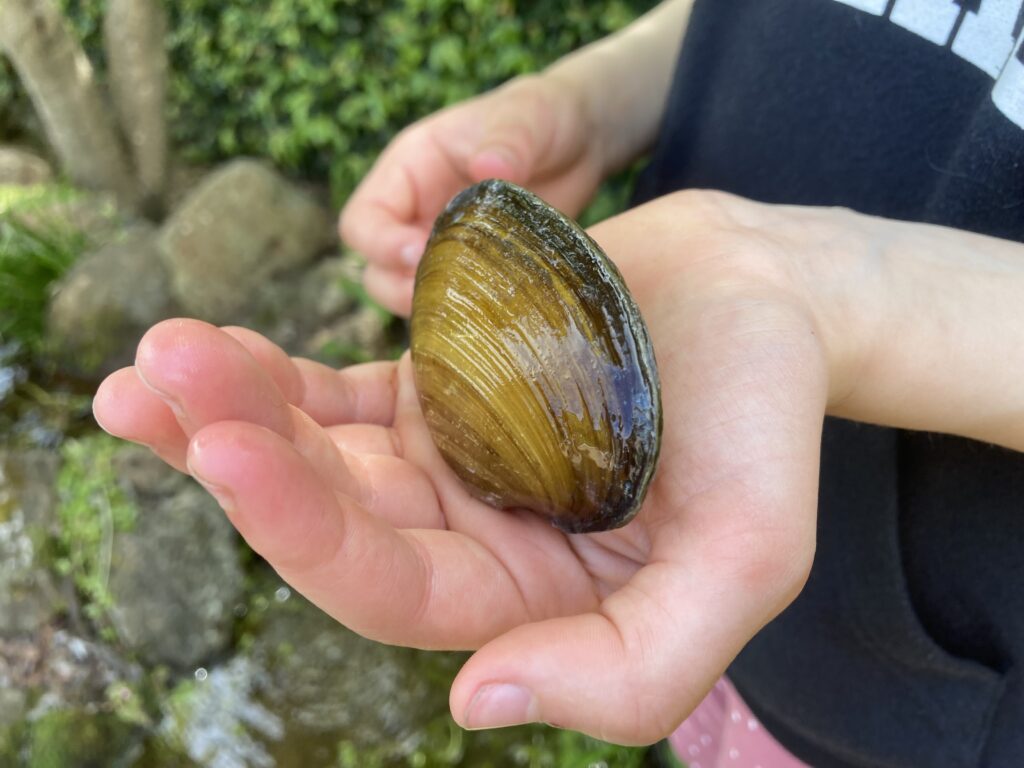
Daphnia and Rotifers
Tiny creatures like Daphnia and rotifers also help.
They feed on algae, detritus, and other microorganisms, naturally cleaning the water.
Plus, they provide a natural food source for fish and other larger pond animals.
In a healthy aquatic ecosystem, everything has its place.
Everything consumes something, and even death brings new life — it’s a symbiotic relationship.
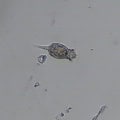
Tadpoles, Dragonfly Larvae, and Other “Exporters”
Some animals aren’t filter feeders but still boost your pond’s health:
- Tadpoles: Eat algae and decaying organic matter. When they mature into frogs and leave the pond, they take nutrients with them — like a free water change!
- Dragonfly and Mayfly larvae: Feed on small insects and even tiny fish fry, helping balance your pond naturally.
- Salamanders and newts: Also contribute by consuming detritus during their aquatic phase.
These animals help maintain balance — and when they leave, they reduce the nutrient load in your pond.
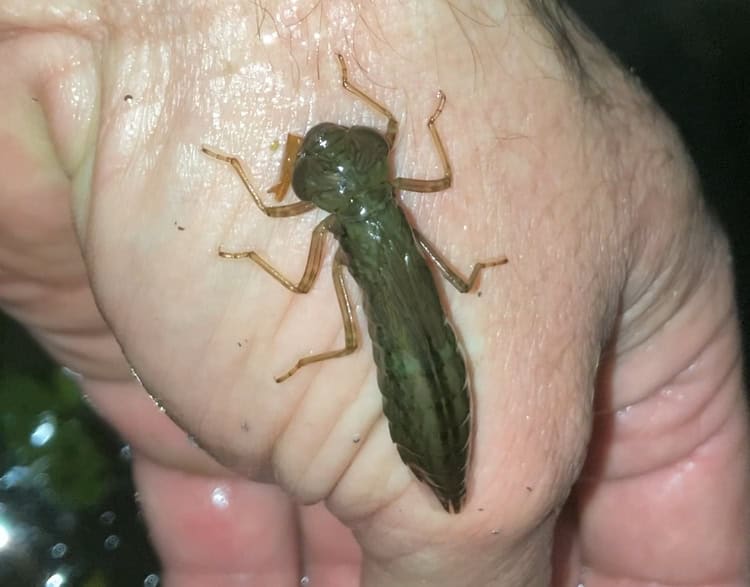
The Vital Role of Plants and Algae
Algae often get a bad rap, but moderate algae growth is actually good — it helps absorb excess nutrients.
The problem only arises when algae overgrow, usually due to too many nutrients and not enough competition.
That’s where plants come in:
- Fast-growing aquatic plants outcompete algae for nutrients.
- They also provide shade, oxygen, and habitat for beneficial organisms.
A good mix of plants = a more stable, low-maintenance pond.
The True Heroes of Pond Filtration: Bacteria
While all the animals and plants we’ve talked about help, the real heroes are bacteria.
Without beneficial bacteria:
- Organic waste would pile up.
- Water quality would crash.
- Algae blooms would take over.
Bacteria break down fish waste, dead plants, and uneaten food.
They convert harmful substances like ammonia and nitrites into nitrates, which are much safer and can be absorbed by plants.
There are even bacteria that:
- Reduce phosphate levels
- Minimize sludge buildup
- Thrive in both oxygen-rich and oxygen-poor areas
Bottom line:
Even if you have shrimp and mussels, your pond’s health depends on bacteria.
How to Boost Good Bacteria and Biodiversity
The best way I’ve found to supercharge bacteria and biodiversity?
Build a bog filter.
A bog filter not only houses beneficial bacteria but also adds natural filtration, improves water clarity, and keeps maintenance low.
Want to learn how?
Check out my other videos on bog filtration or grab my downloadable Pond Formulas PDF — it gives you everything you need to create the perfect DIY pond filtration system.
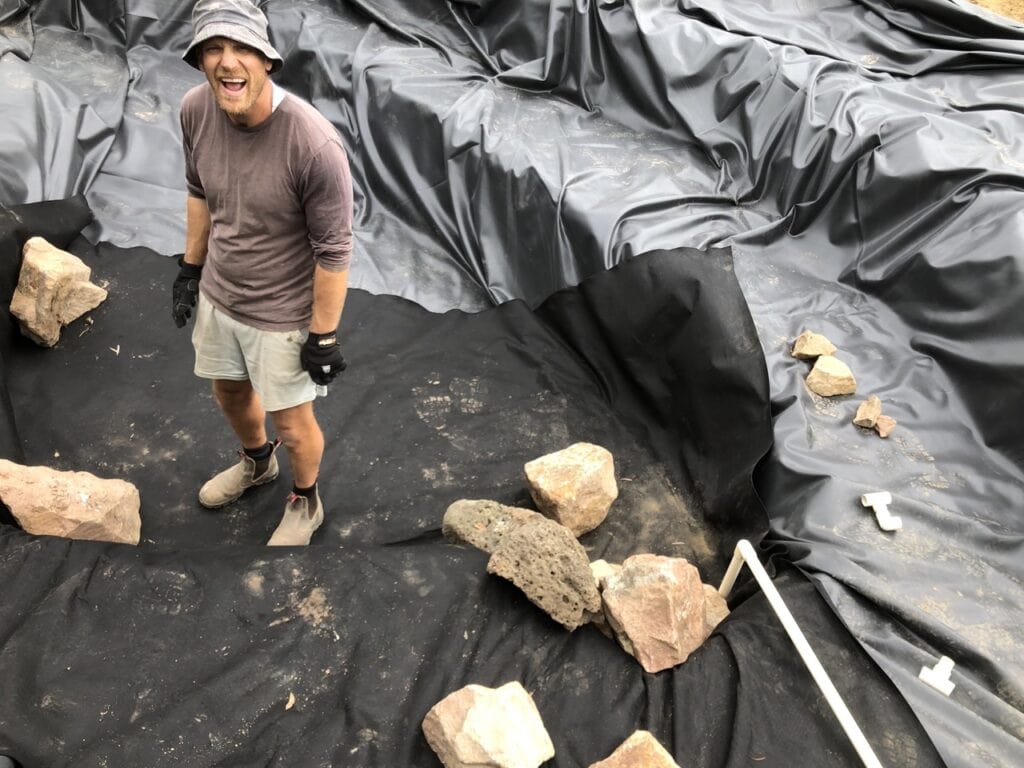
Blueprint I use to build my ponds
- All the numbers I use to design my ponds, delivered straight to your inbox
- These formulas have helped people all over the world build beautiful, low maintenance ponds, without spending a fortune.
- Access to a private community of like minded people and a chat bot that loves answering pond related questions.
Final Thoughts
Building a thriving pond isn’t about fighting nature — it’s about working with it.
When you encourage the right balance of bacteria, plants, and animals, your pond becomes a self-sustaining ecosystem that stays clear, healthy, and beautiful with minimal intervention.
Thanks for reading!
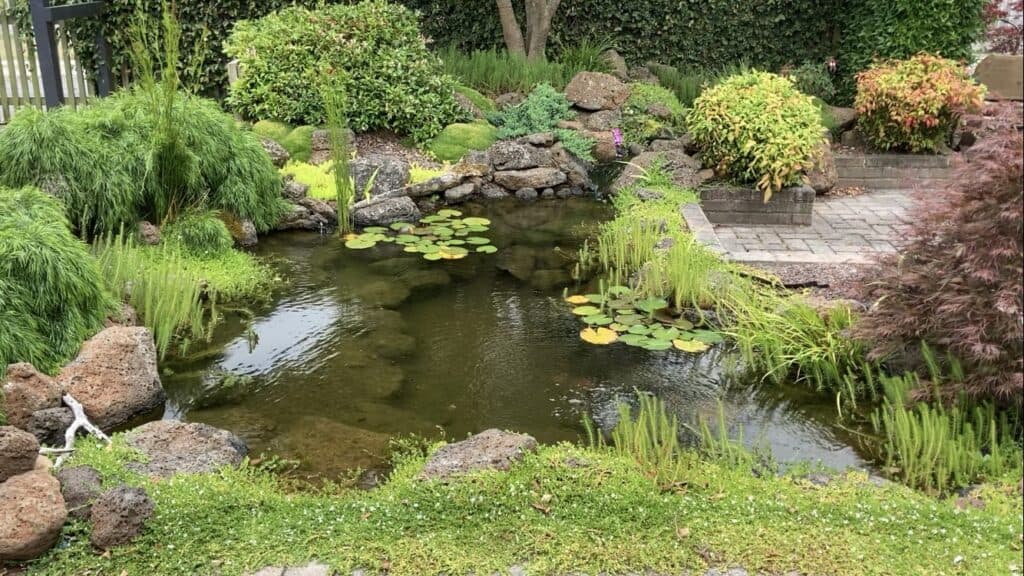
Join my free email list
If you would like to join my free email list click the button below.
I promise I won’t spam you, I’ll only send information I think can help you save money building and maintaining a pond.

